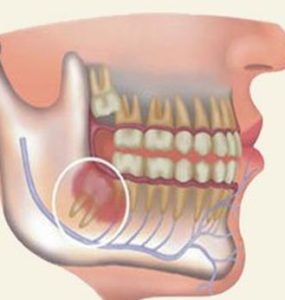One of the most frequent clinical cases in orthodontics is dental crowding in the lower arch. Dental crowding means a condition in which the jaw bone does not have enough space to hold all the dental elements in their natural position, which is why the teeth overlap each other.
Under what conditions there is an overlapping of the teeth
Dental crowding is a problem that arises from the history of our evolution, in fact our ancestors had bones  much more extensive and developed jaw. This type of anatomy allowed them to chew raw food and cut the meat with their teeth.
much more extensive and developed jaw. This type of anatomy allowed them to chew raw food and cut the meat with their teeth.
Evolution has led man to consume cooked food and consequently even softer, new eating habits have led over time to an adaptation of the anatomy, with the reduction of the jaw bone.
Some teeth, such as the third molars, i wisdom teeth, have become completely useless and often, finding no space inside the bone, remain included.
What does dental crowding involve?
In fact, dental crowding is a malocclusion. The consequences are therefore not only aesthetic, due to crooked or overlapping teeth, but a series of dysfunctions and complications occur.
Overlapping teeth do not allow adequate oral hygiene, for this reason patients suffering from this problem will be more likely to be subjected to:
- caries;
- gingivitis;
- periodontitis.
As we mentioned before, it is still a malocclusion, so having the teeth crossed over causes a misalignment of the dental arches. In these cases, therefore, it is probable that there are problems with chewing and possible headaches or back pain.
Do the overlapping teeth come out?
In the past, in the presence of a dental overlap in adulthood, we proceeded with theextraction of one or more teeth to recover the necessary space.
Thanks to continuous progress in the dental field, today the problem can be solved through specific orthodontic treatments, depending on the severity of the clinical case.
Orthodontic appliances for overlapping teeth are usually of two types:
- fixed or mobile orthodontic appliance;
- orthodontic palatal appliance.
The orthodontic appliance, fixed or mobile, works through traction mechanisms and aims to bring the teeth back into their correct position.
The palatal expander is inserted under the tongue, it is not visible on the outside, and allows to increase the space of the palate up to 3 mm. This type of treatment is much more effective for children of developmental age than for adults.
In children the overlapping of teeth can begin to occur in the phase of mixed dentition. For example, during eruption, the permanent molars could take up more space than needed. For this reason, children should be subjected to check-ups to avoid crowding problems for adults.
















